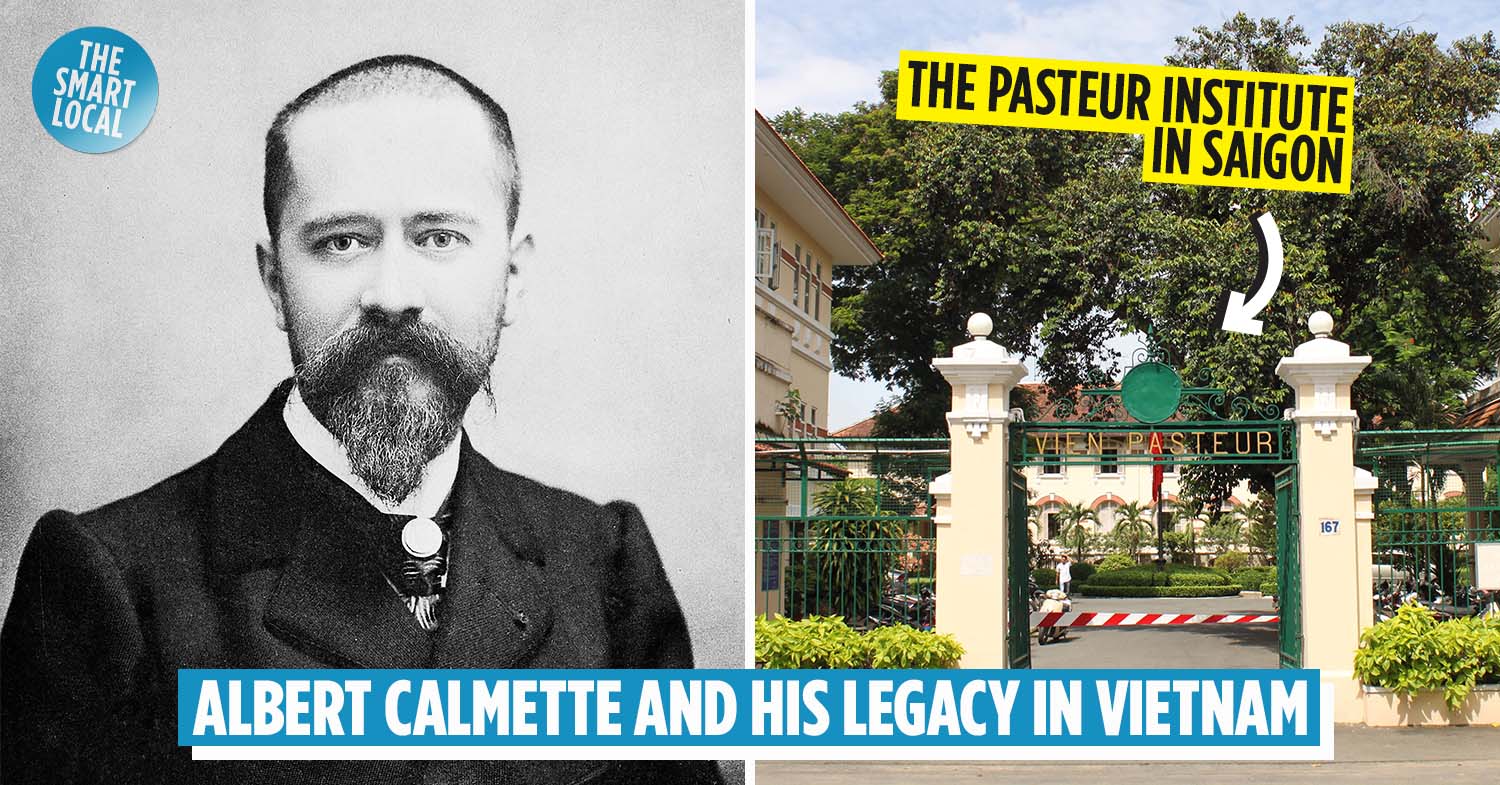Albert Calmette and the Pasteur Institutes in Vietnam
It is widely known that Vietnam was a French colony from the mid-19th century until 1945. For almost a century, the French colonial forces had caused drastic changes to the colony.
Though the Vietnamese suffered a lot during this period, it was undeniable that some Frenchmen had helped to improve the lives of Vietnamese people and were credited for their contributions. In Vietnam’s healthcare field, one of the most significant names was Albert Calmette.
He established the first Pasteur Institute in Vietnam
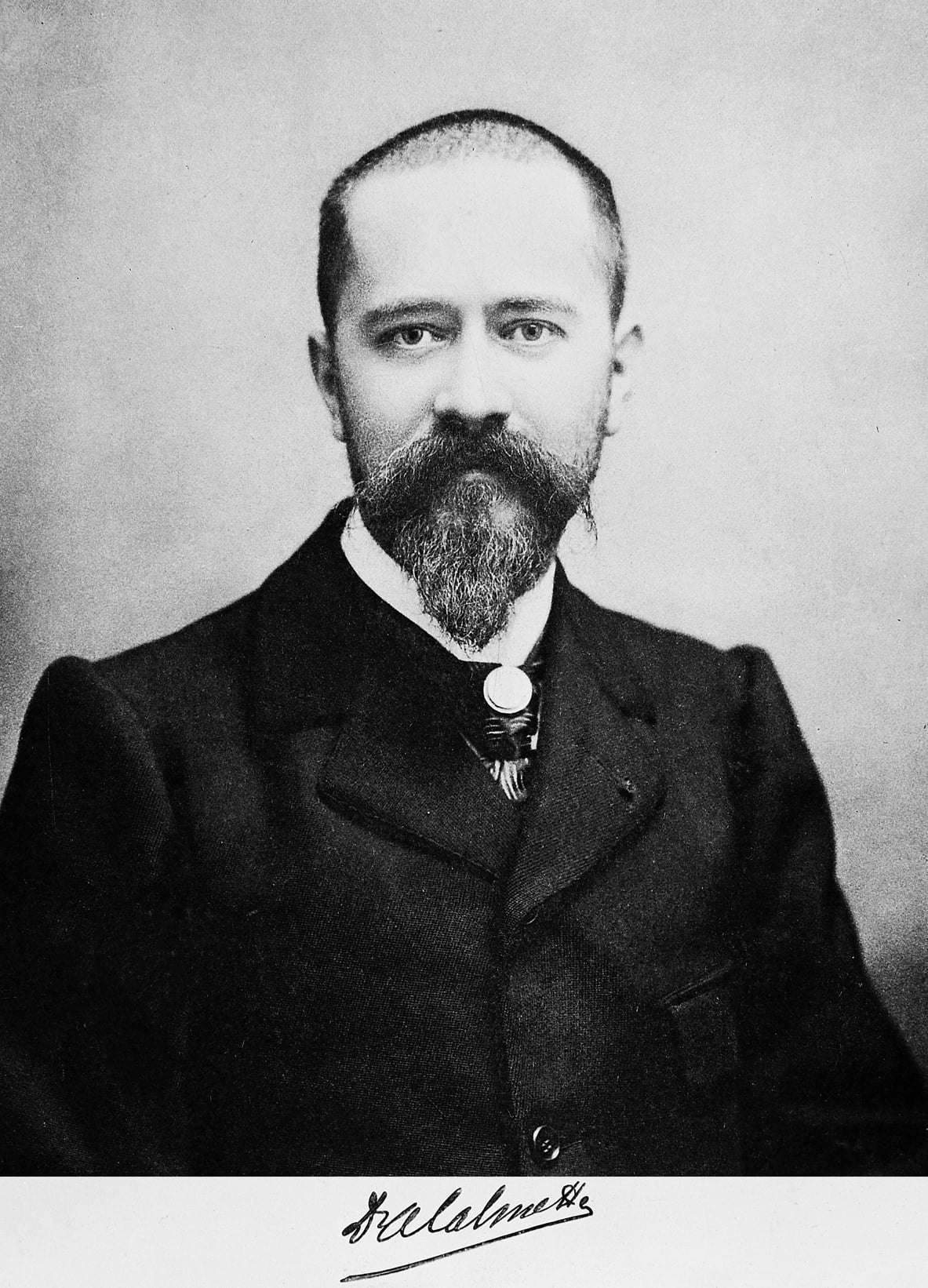
Albert Calmette in the 1900s and his autograph
Image credit: Anton Mansch/Wikimedia Commons
Albert Léon Charles Calmette was born in 1863 in Nice. Though none of his parents pursued a medical career, he aspired to serve in the Navy as a physician. In 1881, he enrolled in the School of Naval Physicians at Brest. In 1883, he started to serve in the Marine Physician Corps in Hong Kong. It was during this time that he learned about tropical diseases, particularly malaria – the subject for his doctorate thesis.
Having served in tropical colonies in Asia and Africa, in 1890, he returned to France and studied bacteriology with Louis Pasteur and Émile Roux – the founders of the original Pasteur Institute. Then he was assigned the mission to establish the first daughter Pasteur Institute in Saigon.
He helped save lots of Vietnamese lives with his medical studies
One year later, in a simple laboratory in the Military Hospital that is now the Children’s Hospital II, he established the first Pasteur Institute in Indochina. After three years, with the facilities brought directly from France, he developed it into a modern and reliable medical research and training centre.
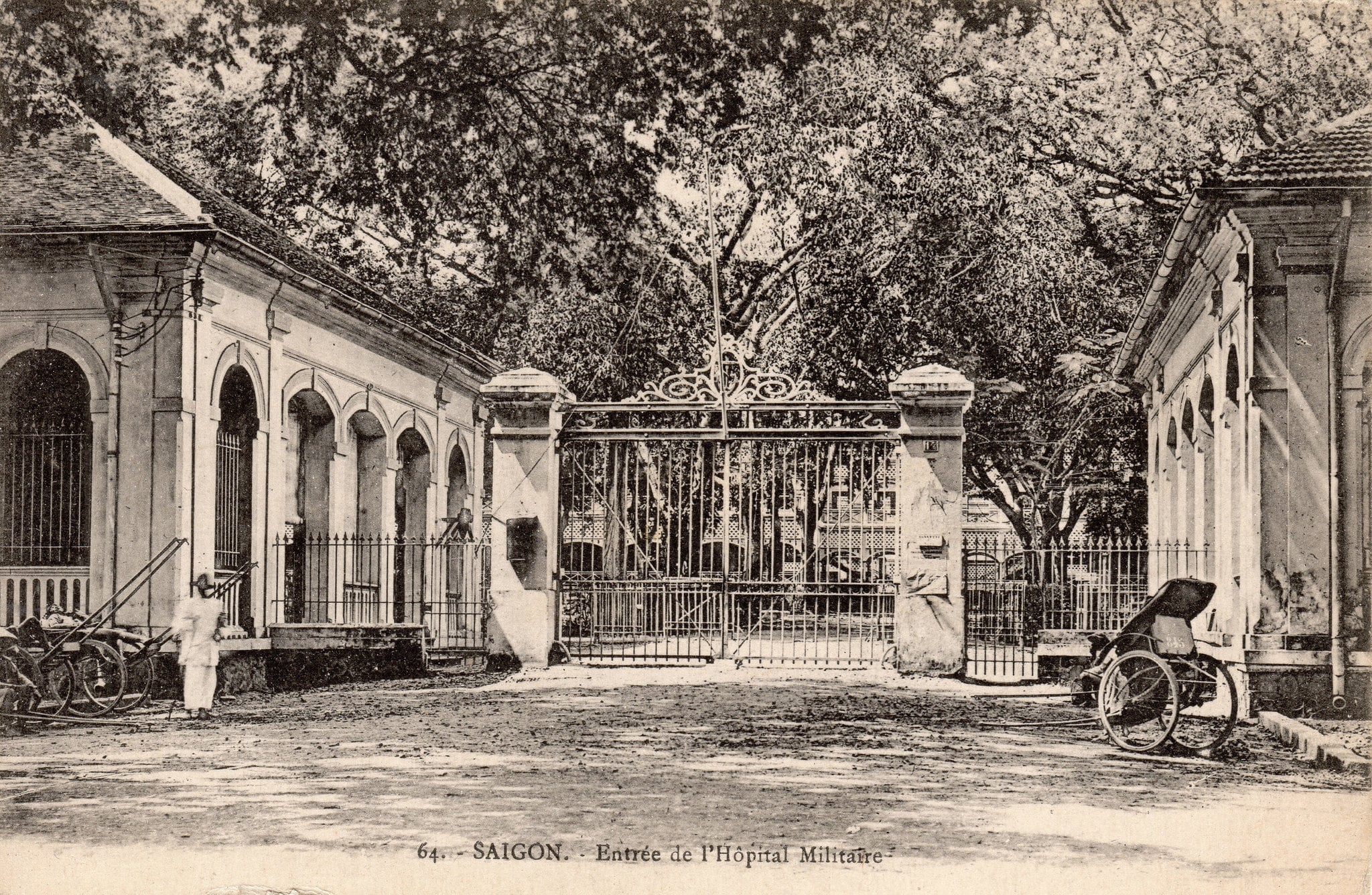
The military hospital where Calmette established the first Pasteur Institute in Indochina. It is Children’s Hospital II today.
Image credit: manhhai
Here, he spent days and nights studying toxicology and finally found an antivenom for snakebites and bee stings. He also facilitated the production of vaccines against rabies and smallpox, which saved lots of lives in the tropical colony. Based on Alexandre Yersin’s discovery of the plague virus, Calmette introduced a specific serum against this disease.
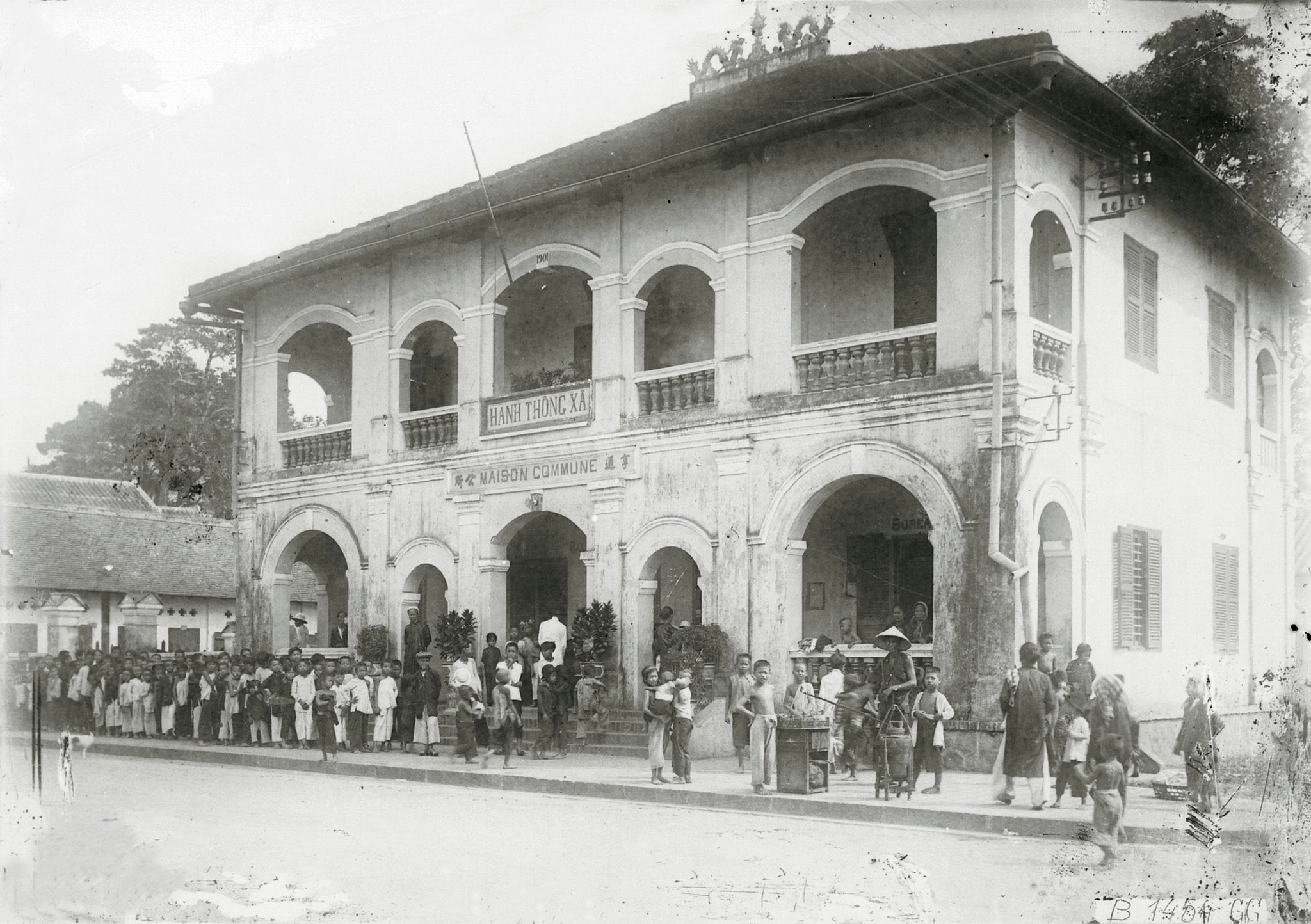
The locals in Gò Vấp, Saigon gathered in front of a communal house while waiting to receive the rabies vaccine in the 1920s.
Image credit: manhhai
In 1894, as his health deteriorated, Calmette returned to France. On this arrival, he began to study tuberculosis, which was untreatable at that time. In 1921, Albert Calmette and Camille Guérin successfully developed the first vaccine against tuberculosis. He kept studying this disease until his death in 1933.
His legacy has saved a lot more lives
Although Calmette left Indochina in 1894, the Pasteur Institute kept functioning. Due to limited space, a new Pasteur Institute building was built on the current site. As requested by Alexandre Yersin, new Pasteur Institutes were launched in Nha Trang, Hanoi, and Dalat in 1895, 1925, and 1936 respectively. Among them, the institutes in Hanoi and Dalat have been renamed the National Institute of Hygiene and Epidemiology (NIHE) and Vaccine Company Limited of Dalat Pasteur.
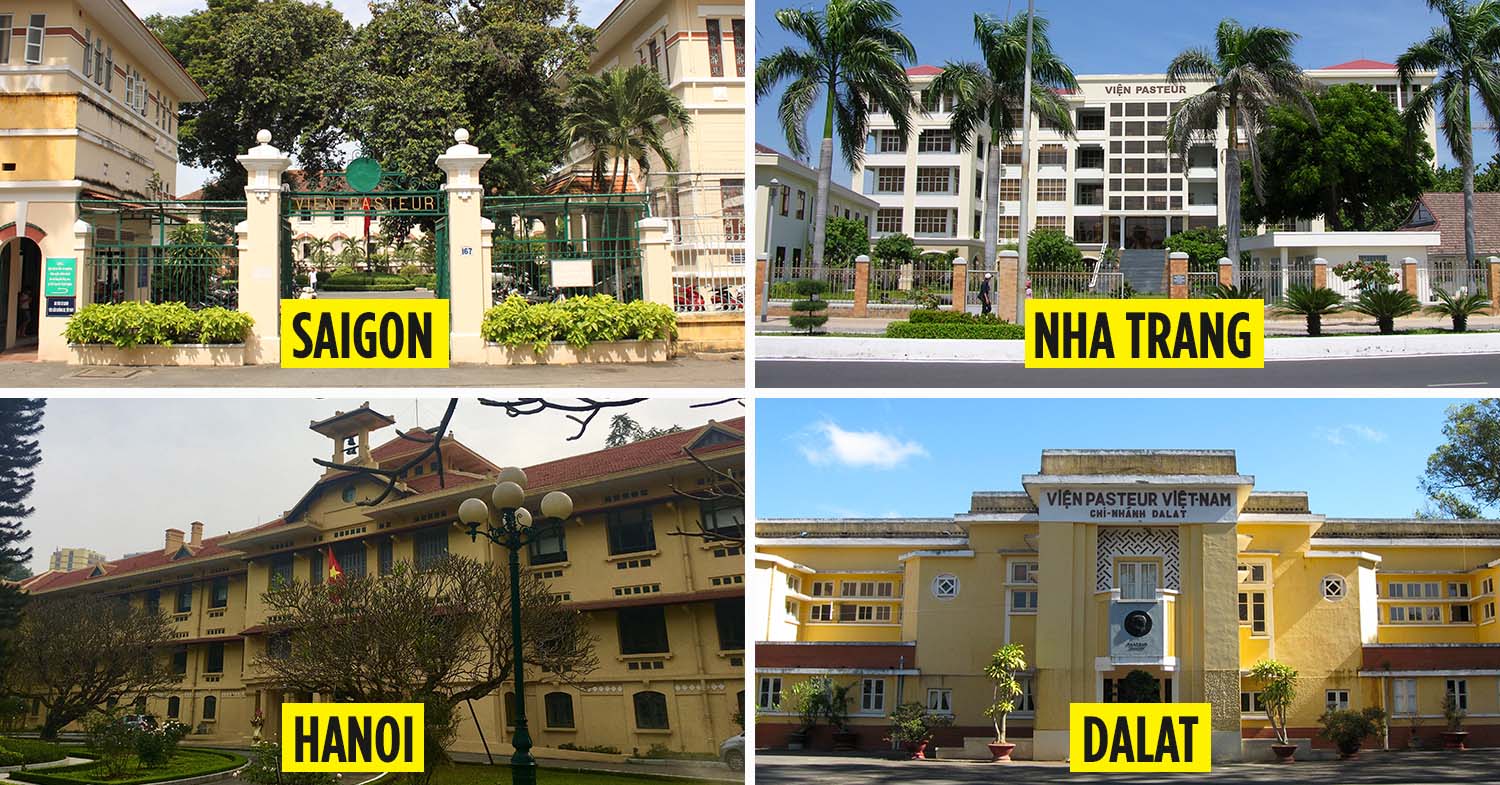
The Pasteur Institutes as they look today. Only those in Saigon and Nha Trang retain their original names.
Image adapted from: Timothée Flutre/Wikimedia Commons, Vinhtantran/Wikimedia Commons, Wikimedia Commons, Diane Selwyn/Wikimedia Commons
In the past the institutes allowed Calmette and Yersin’s vaccines and serums to be more accessible to the Indochinese people. Today, they still play a great role in improving the healthcare conditions in Vietnam, including the ongoing fight against Covid-19.
Despite some controversies over Calmette’s involvement in opium research and alcohol monopoly under the French rule, three important streets in downtown Saigon are named after Pasteur, Yersin, and Calmette in honour of their contributions to Indochina.
Additionally, Calmette also gave his name to a bridge connecting District 1 and 4 and a hospital in Phnom Penh, Cambodia. Indeed, people in the two countries still appreciate what Calmette did for the Indochinese people.
Also check out:
- Alexandre Yersin: Founder of Vietnam’s 1st medical school
- Trần Thành: The inventor a brand that beat Ajinomoto in Vietnam
- History Museum of Hồ Chí Minh City and the mummy of Xóm Cải
Cover image adapted from Anton Mansch/Wikimedia Commons and Timothée Flutre/Wikimedia Commons
Enjoying The Smart Local Vietnam? Follow us on Facebook, Telegram, Instagram, and LinkedIn for more stories like this. If you have a story to share, email us at pressvn@thesmartlocal.com.
